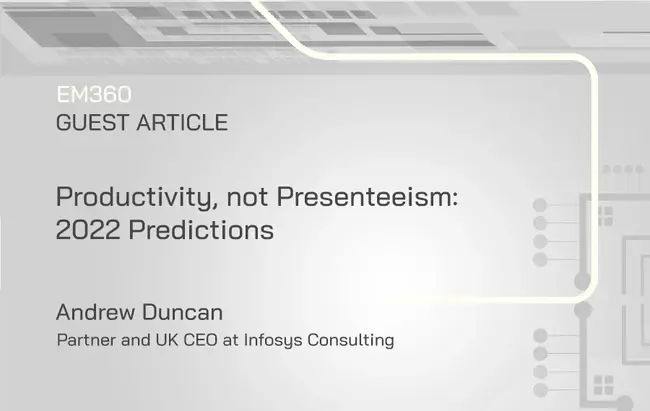As we step into year three of the pandemic, it has become clear that uncertainty is the new certainty. Since COVID-19 swept the globe in 2020, organisations have scrambled to adjust to the disruption, taking whatever steps they can to survive. But while the pandemic is still devastating parts of the world, we are starting to see some transition towards normalcy, helped by rising vaccination rates. Against this backdrop, I see two overarching areas that hold the power to transform and future-proof organisations in 2022 and beyond: talent and technology. In this article I’m focusing on developing talent to restore, renew and grow in the next decade.

Talent attrition will continue
2021 will be known as the year of “the great resignation”, with a record number of employees quitting their jobs or thinking about doing so. Employees are suffering from pandemic fatigue and want a renewed sense of purpose in their work and an employer that offers them psychological safety. Unless organisations take time to understand this, and act accordingly, talent attrition will continue into 2022 – and, with a demand for highly skilled talent intensifying, labour shortages will remain a risk to company growth.
Understandably, many organisations have taken a reactive approach to talent challenges and jumped to quick fixes like financial perks and other transactional incentives. However, in 2022, leaders will need to become proactive in building an environment that attracts talent. Traditional workplace-focused perks will be replaced with health and family benefits, such as expanding childcare options for working parents or digital mental health solutions. Equally, companies with a purpose that feels authentic and relatable will be the ones that resonate for talent; this will likely include those that take actionable steps towards building an inclusive and equitable culture.
Flexibility-forward – with guidelines
The talent market will also continue to shift as companies try out new hybrid work approaches. I’ve previously predicted that flexibility-forward is the approach of the future, and I believe this is still true for 2022. Over the last two years, leaders have seen the positive impact that location-agnostic policies have on employee well-being. However, I believe that these policies will become more structured. Unless companies start to establish clear boundaries around their policies, they risk seeing employee burnout; without guidelines, flexible working can turn into ‘always working’, leaving talent feeling like they need to be available 24/7 to get ahead.
Additionally, there is a risk that hybrid policies will create a new culture of presenteeism; this is going to pose a problem for employees who spend less time in the physical workplace – be it due to childcare commitments, health or even a preference towards solitary working. Managers will need to work together to make sure that employees are evaluated based on results in both day-to-day feedback and formal performance reviews, rather than when or where they work.
The rise of the internal talent market
Prior to 2020, focus was on efficiency and cost reduction – organisations were typically stable and predictable, and their hierarchal operating models reflected this stability. Now, post-pandemic, markets and technology are shifting too fast to continue this way, and companies will need to shift to speed, innovation and agility. In 2022, work that is modular, routine, and predictable will start becoming automated, leaving jobs that require creativity, lateral thinking, and emotional intelligence.
In 2022 and beyond, I see talent being organised around small, cross-functional teams working towards specific problems, outcomes, and goals – making the most of people’s unique skills and interests. Internal talent marketplaces – already in place in consulting firms – will become commonplace, matching employees to projects based on availability and expertise. Tools like Hitch and Eightfold AI already exist to support this, and these internal marketplaces will be supplemented with external gig markets to pull in third party talent as needed. Ultimately, employees may still be told the “what”, but the “how” will be left up to them.
The disruption of the pandemic has unraveled norms of the past and opened the door to new ways of working, allowing people to take care of their needs, focusing their time on what matters to them and encouraging them to thrive. In 2022 and beyond, it is the organisations that nurture their talent to rebuild for a better, more sustainable future that will come out on top.







Comments ( 0 )